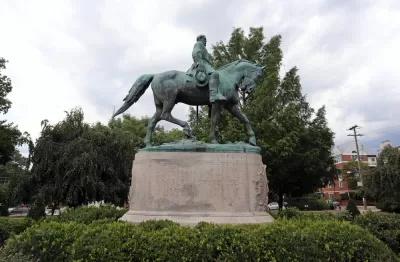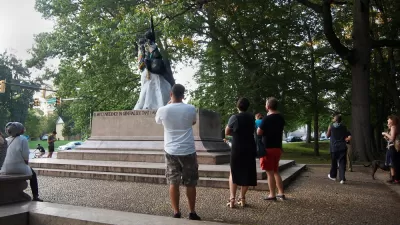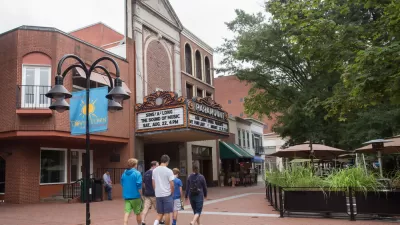In the aftermath of the violence in Charlottesville, resulting from the gathering of white supremacists and neo-Nazis, American cities are rethinking whether statues honoring the heroes of the Confederacy belong in public spaces.

During his infamous, impromptu press conference at Trump Tower last Tuesday, President Donald Trump asserted, "Not all of those people were white supremacists by any stretch," in response to a question about the alt-right protest on the campus of the University of Virginia on Friday night, Aug. 11. "Those people were also there because they wanted to protest the taking down of a statue, Robert E. Lee."
However, that statue, like others honoring heroes of the Confederacy, are symbols of white supremacy, writes Zack Beauchamp for Vox, who points to an April 2016 report by the Southern Poverty Law Center, "Whose Heritage? Public Symbols of the Confederacy," that shows two distinct time periods when most of the statues were dedicated.
The first began around 1900, amid the period in which states were enacting Jim Crow laws to disenfranchise the newly freed African Americans and re-segregate society. This spike lasted well into the 1920s, a period that saw a dramatic resurgence of the Ku Klux Klan, which had been born in the immediate aftermath of the Civil War.
The second spike began in the early 1950s and lasted through the 1960s, as the civil rights movement led to a backlash among segregationists. These two periods also coincided with the 50th and 100th anniversaries of the Civil War.
In a compelling op-ed for The New York Times, Karen L. Cox, a professor of history at the University of North Carolina at Charlotte, makes the same historical point, and also illuminates the title of the SPLC report.
But the Charlottesville march, with its hundreds of neo-Nazis and white nationalists coming out to defend the memory of General Lee, puts the lie to the notion that, as the apologists say, these monuments are about “heritage, not hate.”
This is hardly new. Confederate monuments have always been symbols of white supremacy.
Cox is also cited by PolitiFact about when "Confederate symbols gain prominence." It confirmed that they were "political statements aimed at African-Americans."
It's worth noting that Robert E. Lee himself "was against erecting Confederate memorials," writes Chris Boyette for CNN.
Related in Planetizen:
- BLOG POST, Dean Saitta: The Archaeology of Public Memory and Civic Identity, August 21, 2017
- Trafalgar Square Shows How to Reuse Pedestals Where Statues Once Stood, August 19, 2017
- Search the Location of the Nearest Confederate Monument, August 18, 2017
- Charlottesville and the 'War Against Public Space', August 15, 2017
- New Orleans Begins Removing Monuments to the Confederacy, April 24, 2017
FULL STORY: What Trump gets wrong about Confederate statues, in one chart

Trump Administration Could Effectively End Housing Voucher Program
Federal officials are eyeing major cuts to the Section 8 program that helps millions of low-income households pay rent.

Planetizen Federal Action Tracker
A weekly monitor of how Trump’s orders and actions are impacting planners and planning in America.

Ken Jennings Launches Transit Web Series
The Jeopardy champ wants you to ride public transit.

Opinion: Transit Agencies Must View Service Cuts as Last Resort
Reducing service could cripple transit systems by pushing more riders to consider car ownership, making future recovery even less certain.

‘Smart Surfaces’ Policy Guide Offers Advice for Building and Maintaining Urban Tree Canopies
Healthy, robust tree canopies can reduce the impacts of extreme heat and improve air quality.

New Jersey Lawsuit Targets Rent-Setting Algorithms
The state of New Jersey is taking legal action against landlords and companies that engage in what the state’s Attorney General alleges is illegal rent fixing.
Urban Design for Planners 1: Software Tools
This six-course series explores essential urban design concepts using open source software and equips planners with the tools they need to participate fully in the urban design process.
Planning for Universal Design
Learn the tools for implementing Universal Design in planning regulations.
Heyer Gruel & Associates PA
Ada County Highway District
Institute for Housing and Urban Development Studies (IHS)
City of Grandview
Harvard GSD Executive Education
Toledo-Lucas County Plan Commissions
Salt Lake City
NYU Wagner Graduate School of Public Service




























